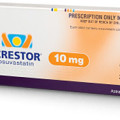~by Dr. Neville Wilson.
WHAT DO WE MEAN BY REDUCING THE RISK OF A DISEASE ?
In the provision of Healthcare, RISK refers to the probability of a bad outcome for a person who has a disease, where the “bad outcome” might be a non-fatal heart attack or stroke, or a fatal heart attack or stroke, or death from the actual disease, or death, or disability, from causes other than the disease. (ie. the consequences of the treatment being given for the disease).
Randomised Controlled Trials (RCT) are a type of study in which the participants being studied are randomly allocated, either to a treatment (intervention) group, or a control (non intervention or placebo) group, and the differences in outcome measured after a predetermined and fixed period of trial study.
The treatment group may be given a drug, or a diet, or advice about lifestyle changes, while the control group may be given a placebo (similar in appearance or taste to the treatment drug, but without the actual drug ingredient).
The differences observed and measured between the 2 groups is then calculated and presented as a LIKELY risk for developing the disease being evaluated, or the difference between the 2 groups may be presented as an absolute (actual) risk reduction (ARR) by the treatment given to the TREATMENT group, compared to the non –treatment in the CONTROL group.
The results may also be interpreted as a relative risk reduction (RRR) between the 2 groups.
It is common practice for trial authors to present their results, following the conclusion of a trial, in relative rather than absolute terms, by quoting a relative risk reduction (RRR) as a percentage figure.
It is of benefit to the authors to present their results in this way since the relative risk reductions are likely to artificially magnify the size of benefit for the treatment, and thereby exaggerate the significance of the treatment method, be it a drug or some other method of intervention.
While the absolute risk reduction (ARR) reflects more accurately the difference in risk between treatment and non-treatment, it is usually of a smaller percentage number than the RRR, which has a more impressive appearance, and favourable for the author’s intention to produce an impressive and emphatic result for public consumption, and ultimately for successful marketing of the product tested.
AN EXAMPLE:
Consider a group of 1000 persons being tested with a drug, and randomly allocated to 2
Groups, with 500 in the treatment group, and 500 in the control (non-treatment) group, for purposes of testing the efficacy (effectiveness) of the treatment, as well as the risk of not taking the drug.
If, for example, 20 people in the treatment group have a bad outcome (ie. disease or death) and 25 people in the control group have a bad outcome, the percentages of bad outcome for the treatment group would be 20/500 x 100 = 4%, and the percentage of bad outcome for the untreated (control) group would be 25/500 x 100 = 5%.
The difference in % points between the 2 groups would be 5% – 4% = 1%.
1% is thus the absolute risk reduction for the treatment.
We can see that the ARR of 1%, is not a very large and significant risk reduction. It is, in fact, trivial in statistical terms.
Now, consider the relative risk (RR) and the relative risk reduction (RRR) between the 2 groups taking account of the same figures.
The Relative Risk is a measurement of the proportion of bad outcomes in the treatment group relative to the proportion of bad outcomes in the control group, of which the relative risk is 4% of 5% = 0.8%.
The Relative Risk Reduction (RRR) is a measure of treatment benefit relative to benefit in the non-treated group .
In this case the relative benefit of treatment would be 1 – 0,8 = 0.2 or 20 %, compared with an ARR of 1%., for the same outcome figures in the trial.
So, for the same outcome, using the same figures, the absolute risk reduction for treatment of the disease is 1.00 %, while the relative risk reduction is 20%, a figure which appears to be more impressive, has the same value as the smaller absolute risk reduction of 1.0%
The presumed benefits of a drug tested in a trial are usually presented as a relative risk reduction for purposes of exaggerating benefit. These figures may, unfortunately, mislead clinicians in their estimate of a treatment benefit, unless a baseline level of risk has previously been evaluated for the patient.
THE JUPITER TRIAL:
The JUPITER TRIAL was hailed as a highly successful experiment in proving the benefit of taking a powerful cholesterol lowering drug, called CRESTOR., with a proclaimed benefit of about 40%, according to the trial authors.
The media seized on these pronouncements of benefit, and flashed headlines across the world, with statements of a 50% chance of protection against heart disease by taking Crestor !
How did the trial authors arriver at these figures ?
In a treatment group of 10,000 people taking Crestor, 77 had a bad outcome, and in a similar group of 10,000 people not taking Crestor, 136 had a bad outcome. There was a slight benefit for the Crestor group, with an absolute risk reduction (ARR) of only 0.59%. for the Crestor group.
The difference between 1,36% (136/10,000 x 100) and 0,77% (77/10,000 x 100 ) = 0,59% ARR, and is less than 1%.
The relative risk in this case was 0,77/ 1.36 = 0,56, and the relative risk reduction (RRR) was 1-0,56 = 0,43 or 43%.
The figure of 43% is more impressive than the figure of 0,59%, and served to promote the marketing prospects of the drug by using inflated figures with an exaggeration of benefit.
When the figures for the JUPITER study were finally analysed, they were found to be less impressive than proposed, with more deaths from all causes in the treatment (Crestor) group and deaths from cardiovascular causes the same in both groups.
NNT (NUMBER NEEDED TO TREAT)
Using the above figures may also provide an estimate of how many people need to be treated by a specific drug in order to achieve a benefit for one patient. This number is called the NNT.
The NNT can be calculated from the ARR, and is the reciprocal of ARR, or 1 divided by the ARR.
In the JUPITER trial an ARR of 0.59% was calculated, which equates to 0,59 patients out of every 100 patients being likely to benefit from the treatment. Therefore he number needed to treat for 1 patient to obtain a benefit would be 100/ 0.59 = 169.5
The NNT in this trial is about 170 patients who needed to be treated before a single benefit was recorded.
Some researchers calculated a NNT of 120 patients for 2 years to obtain a benefit from the treatment given to patients in the JUBITER trial.
00000O00000






Details of my commentary on the JUPITER STUDY (2008) can be seen under the Article on my Blog entitled “Is it Justifiable to Medicalise Healthy Persons ?
The statin drug, CRESTOR, was used in this study. Crestor is widely used by Doctors and Cardiologists in the belief that it will reduce the risk of death from heart disease.
Read the true details of this study which were not correctly reported, either by the popular media, or the medical newspapers !
Please note that the Relative Risk Reduction (RRR) was reported by the Jupiter Study Researchers, and not the more accurate Absolute Risk Reduction (ARR).
Using the Relative Risk Reduction exaggerates the clinical benefit of the drug Crestor, thereby giving a false impression of its ability to reduce risk of dying from a heart attack !
“High Cholesterol reduces Risk in the Elderly” – see my article on this Blog posted 1 June, 2011.
Thanks much for the clarification between absolute risk and relative risk. When explained like this, it certainly apparent that pharmaceutical firms are indeed playing with bogus statistics to make their wares appear more effective.
It would also seem that the ‘Hazard Ratios’ being utilized by medical research studies are another form of misleading statistics along the same vein.
What is your opinion of the widely used HRs? Any clarification examples that you can use in a future article to explain their use and value?
Thanks for watching !